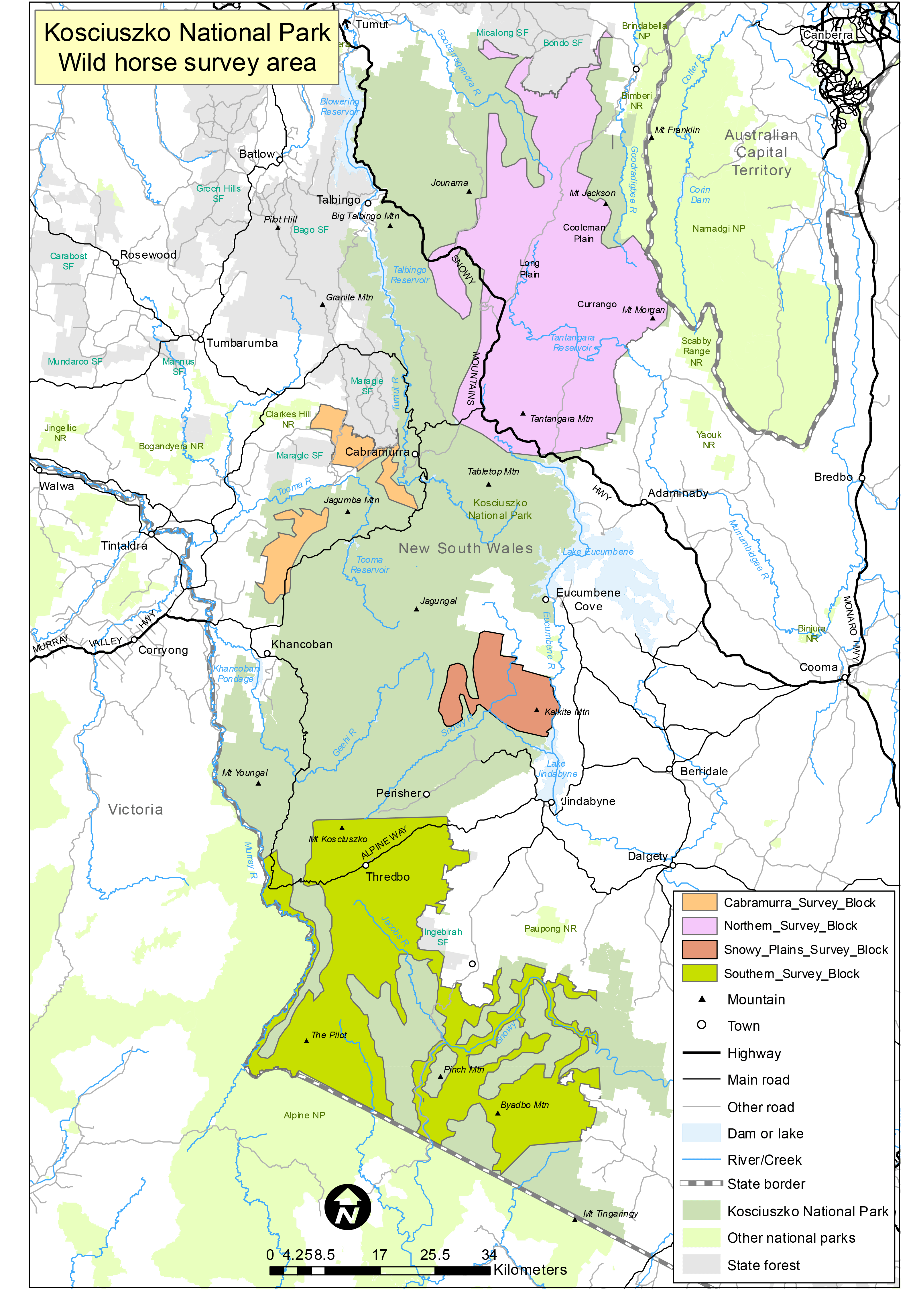The NSW Government is legally required under the Kosciuszko Wild Horse Heritage Act 2018 to reduce wild horse numbers in Kosciuszko National Park to 3,000 animals, in retention management areas, by 30 June 2027. The plan does not specify any population targets before the final target set for 30 June 2027.
This approach seeks to balance cultural heritage with the need to protect the park's diverse and fragile sub-alpine and alpine ecosystems.
The NSW National Parks and Wildlife Service uses regular scientific surveys to estimate Kosciuszko National Park's wild horse population. The surveys are conducted in accordance with international best practice.
Kosciuszko National Park is 3 times larger than the Australian Capital Territory and the same size as the island of Bali. Determining the wild horse population by counting every animal is impossible in such large, rugged and remote terrain.
Surveys are designed and analysed by an independent expert. The results are peer-reviewed by different independent experts from the CSIRO (Commonwealth Scientific and Industrial Research Organisation) and Queensland Department of Agriculture and Fisheries.
The next population survey will occur before the end of 2025.
The wild horse survey uses the international best practice method for reliably estimating the population of large mammals over wide geographic areas, known as distance sampling. More than 2,000 peer-reviewed scientific papers use distance sampling to estimate wild animal populations.
The 2024 survey also trialled mark recapture distance sampling and the use of thermal camera technology.
The survey is conducted from a helicopter across 4 large areas (survey blocks) covering around 39% or 267,500 square kilometres of the park. The areas have been known to support wild horse populations.
The helicopter flies a series of parallel lines, known as transects, in each survey block at a height of 61 metres and a speed of 93 km/hour. The total length of transects flown in the 2023 survey was 1,939 kilometres. The 2024 survey incorporated some improvements to design, including additional transects in the northern and southern survey blocks to increase the precision of population estimates. The total length of transects flown in 2024 was 2,229.9 kilometres.
Key details recorded by the observers in the aircraft include:
- the number of clusters of horses and the number of horses in each cluster (a cluster can be a single horse if it is on its own)
- the distance from the centreline (inner edge) of the survey strip – the following categories are used (0 to 20 m, 20 to 40 m, 40 to 70 m, 70 to 100 m and 100 to 150 m)
- vegetation cover at point-of-detection (open or tree covered)
- observer seating position
- survey aspect in relation to the sun and time since sunrise/time to sunset.
The location of transects followed a systematic random sampling design – that is, the starting point for the transects in each survey block is randomly generated, and the transects then followed a systematic pattern. This means the sample was unbiased.
The sample of observations is then analysed using advanced software to estimate the wild horse population in the entire survey area.
It is rare that a count (or census) of an entire animal population can be undertaken in the wild, whether by air or ground.
The park's size and mix of rugged mountain escarpments, valleys and remote wilderness areas means it is impossible to count every wild horse in the landscape individually.
Instead, we use the internationally recognised best practice method to estimate the wild horse population. This method gives a 'confidence interval' - a range that is the best estimate of the wild horse numbers.
The next population survey is scheduled to be conducted before the end of 2025.
Surveys will occur each year while the Kosciuszko National Park Wild Horse Heritage Management Plan is being implemented to ensure populations are tracked regularly into the future.
More information
- A survey of the wild horse population in Kosciuszko National Park October 2023
- A survey of the wild horse population in Kosciuszko National Park October 2022
- A survey of the wild horse population in Kosciuszko National Park October 2020
- Distance sampling explained
- Distance sampling references
- Australian Alps National Parks feral horse surveys
